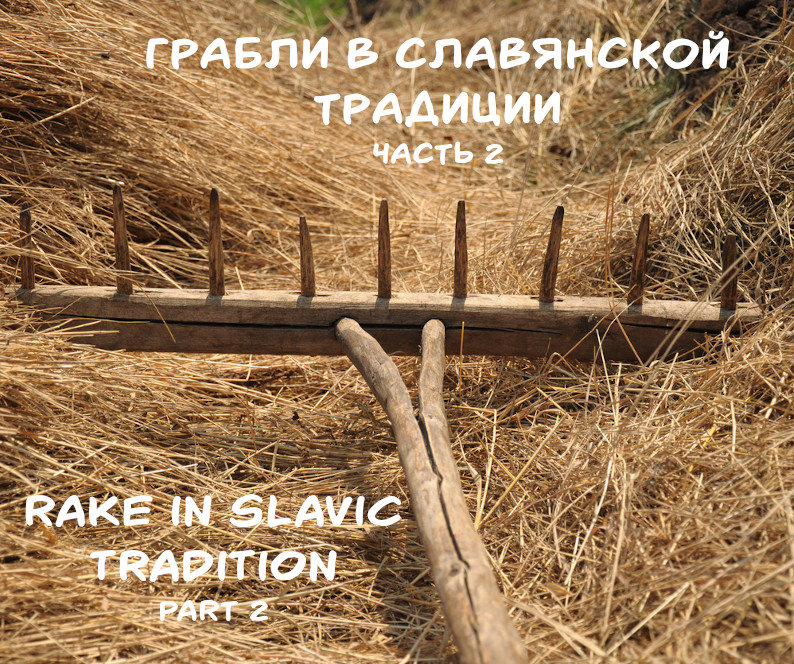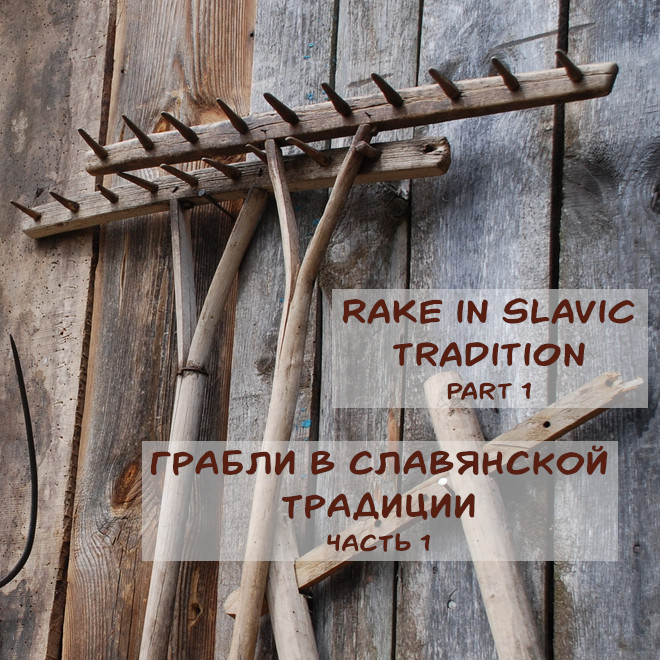Sometimes, a rake was an omen of trouble: it predicted a quarrel if thrown on the field with the teeth up, as the Slovenes believed, or a difficult childbirth if a pregnant woman stepped over it.
ꏍ
But most often rake brought good luck. In order for the sheep to have a lot of milk, the Serbs would leave the rake in the barn for a “sleepover”. During the flax sowing, Poles would put a rake in the field for a good harvest. In Bosnia, an owner who wanted to sell a cow, would scrub its back with a rake for good luck and to ensure that the animal will not be “returning home”.
ꏍ
In Serbia, childless spouses went to the mill, and the husband “gathered” water with a rake, while the wife drank it to get pregnant. The rake also helped young Serbian girls to attract young men: on the eve of St. George’s Day, they sat astride a rake, drove around the house and said: «Како грабуље грабе, тако се и младићи грабили за мене» (As the rake drags, so let the guys “drag” after me).
ꏍ
How did your grandparents (or yourself) use the rake? Only for their intended purpose or also in magical rituals? 😉
ꏍ
Source: “Slavic Antiquities” – encyclopedic dictionary in 5 volumes by Institute for Slavic Studies of the Russian Academy of Sciences.
ꏍ
Rake in Slavic tradition – part 1
It would seem that everyone knows the purpose of the rake, but the ancient Slavs used them not only to collect hay and leaves, but also in protective rituals.
ꏍ
Slovenes used them as defense against thunderstorms: they threw a rake under the roof with the teeth upward in order to “cut” the cloud. Serbs performed interesting rituals with a rake to defend livestock from snakes and witches – women rowed near cattle barns and said: “I rake in my own, not someone else’s”.
ꏍ
To protect cattle from evil curses, Slavs would put hot charcoal on the ground, cover it with an iron baking sheet and then “row” over it with a rake. In the process, they would say three times: “As this coal cracks, so let her (a witch), who is going to curse the cattle at night, to crack from torment; as I row on this baking sheet, so let the devils torture her in hell. ” Then the coal was taken out, mixed with ashes or flour, and scattered around the barn with the words: “After she has collected all the ashes, only then she will harm my cattle.” However, witches also had their own “counter-rituals” to resist such “measures” – for example, by drawing a magic circle around the cattle with a rake…
ꏍ
To be continued…
ꏍ

